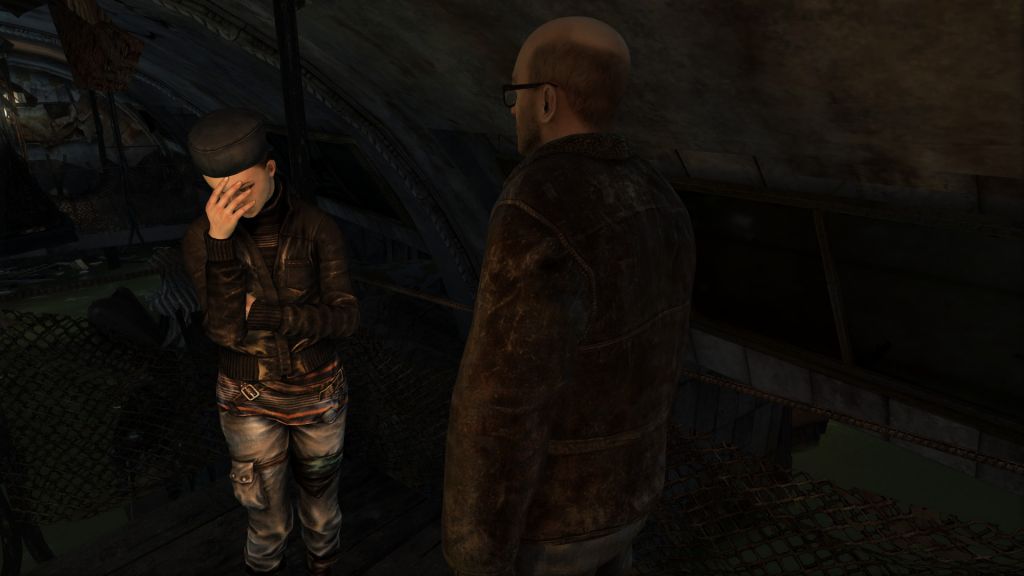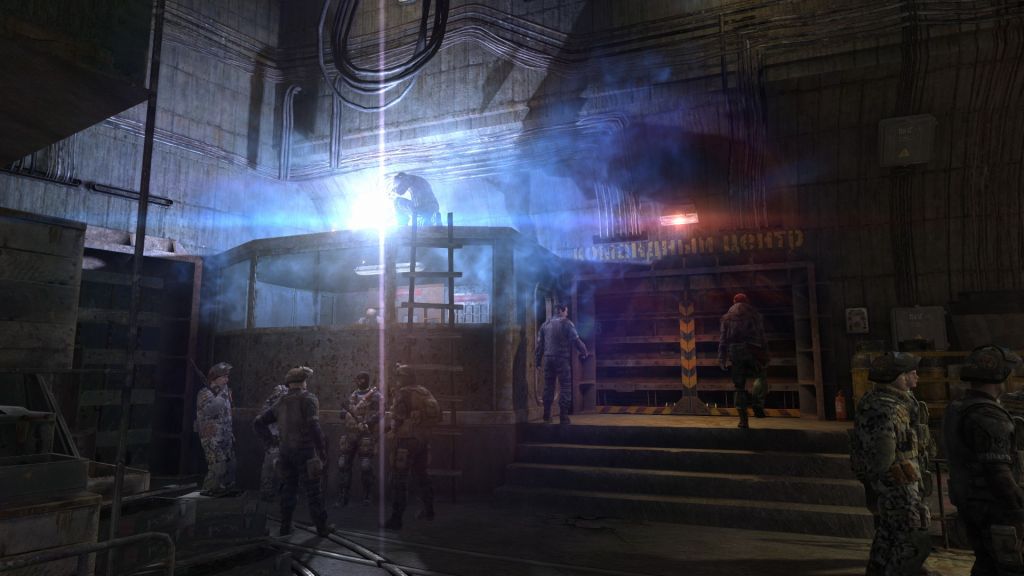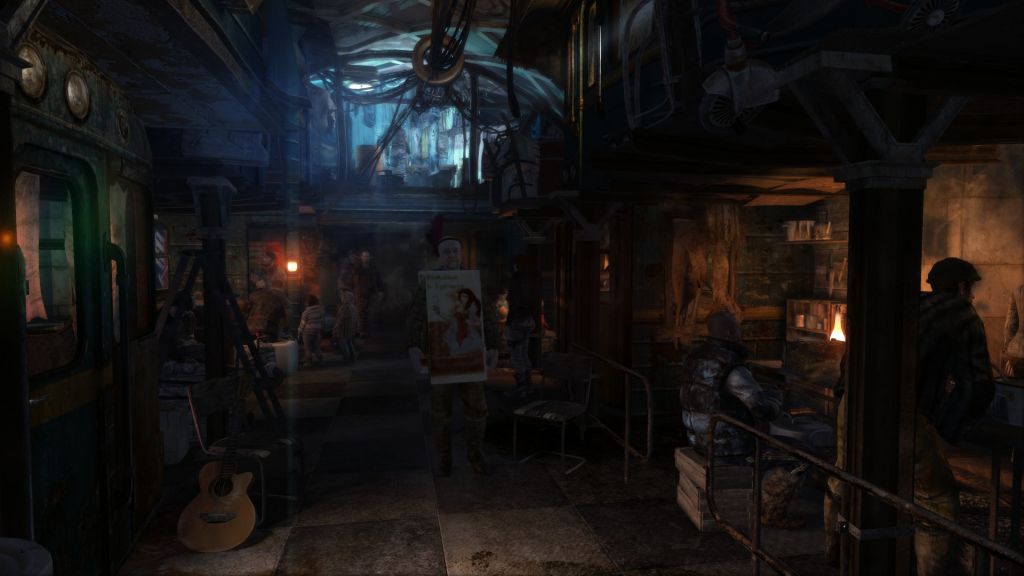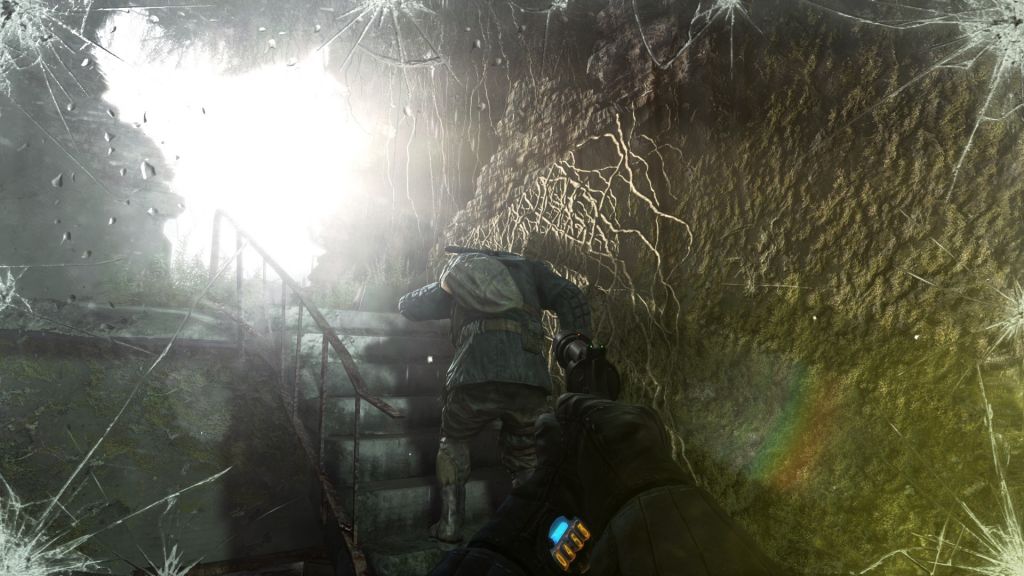Also on: Playstation 3, Xbox 360
Publisher: Deep Silver
Developer: 4A Games
Medium: Digital Download
Players: 1
Online: N/A
ESRB: M – Mature
Remember when Metro 2033 came out? It was notoriously gorgeous – at a cost to high-end PC users – and deliberately oppressive in its atmosphere. I can’t remember if it was marketed as a horror game at the time, but it definitely doesn’t seem like one now. The only horror remaining was of course the idea of the Metro universe being one slight reality away from ours due to a few poor political decisions. Atmosphere can only go so far for a game, however, and having recently played the former release back-to-back against its sequel, I’ve got a few things to say about both games– one of them I’m reviewing for the first time.
Firstly, the story arcs are nearly identical. That being said, you can expect a game with a wealth of context at the front end, a long walk for the first two acts with at least one major hub area, and a finale that quickly wraps things up without overstaying its welcome. They both ran the same amount of time, as well. Also taking place in post-apocalyptic so-and-such. And Artyom. And colony disputes.
That being said, after Metro 2033 there was almost no difficult second album to be had. It wasn’t a perfect game by any means, and Metro: Last Light includes a lot of welcome changes towards what hangups players had in the prior game, including a competent approach to stealth sequences (along with a very welcomed option to knock enemies out instead of stabbing or shooting everyone), a more transparent story with identifiable antagonists, and a more stable engine to run it all.
Regardless, we are at war with ourselves– a point the Metro series is insistent on driving home. We are designed to kill ourselves, and usually ignore the things that might keep us alive, but I just wonder how the Nazis made it further than North Korea after all-out nuclear destruction. I guess the books would know more about that if I read them. As far as Last Light is concerned, if it’s not the player committing genocide, then it’s someone else who you have to stop. Apparently this is a future that is more resolute than ever on a per-colony idealogy, so that the only way to toss out a bad apple is to dump the whole bushel.
Since the draw of these games has always been the attention to detail in recreating a post-apocalyptic society that is so believable it will have you opening your window to let out the dust, that’s exactly the note that Last Light plays strongest. There’s a stronger sense of setting this time around, and whereas the different towns in 2033 looked pretty similar throughout, Last Light thankfully delivers identity to towns. Venice, in particular, is a standout hub that paints a picture of what a vacation destination might offer tourists of the future– what with the debauchery and waterways. The communist front also features a few sights to see, while maintaining an at-war profile one might recall from WW2 materials. I really can’t think of a more tasteful way to justify ladies prancing around on stage for our entertainment.
This is primarily why I rather liked Metro: Last Light. If not for the updated engine and refined mechanics, then for the fact that it allows for a conservative campaign that doesn’t overstay its welcome. Perhaps 4A Games decided not to make gravity the focus of Last Light, and by letting it be more of a traditionally action-oriented FPS were able to make sure the roller coaster had all the elements a good ride should deliver. The result being a more competent FPS (although with some lackluster AI) with some monochromatic, Kodak-Moment-a-minute art direction, and character-heavy plot.
Speaking of the story, you’ll run across a few persistent characters who help players identify a face with its governing faction, and personalities who represent a greater idea at play. There is also an alternate ending available to devotees who manage to identify the game’s subtle and at times forward moral decisions, but the choices at hand more ultimately boil down to what gun you’ll use to ward off mutants underground. The writers have taken advantage of the video game format and once again introduce some abstraction and hallucinated sequences, which are some of the more interesting parts of the game. Between reliving the world as it was, and small stories snuck away in an alley, Last Light’s overarching plot of war on the horizon begins to feel increasingly archaic. For example, this instance:
At one point in Venice I found myself at the top of a staircase, about to return to the hustle and bustle, when a young woman quietly walked in the direction I came from. I thought to follow her home out of curiosity, and at the balcony area of the stairs she stopped, with her hand on her face. Shortly after, she was joined by a man. They shared no dialog, and maybe I had broken some scripting by being in a location before these people, but the silence was equally interesting for a moment. Somehow I had tricked myself into appreciating something that was most likely a bug, and the moment was there for me.

Either I’m bored having to save the world again, or I’m feeling an itch that 4A games wants to scratch a little more than what Last Light was designed to do. The multitude of context in Last Light is leaps and bounds above Metro 2033, from stage shows to backstage private shows, homespun contests, and so much as developing understandable relationships with a handful of characters, that players are given enough substance to leave one impression or another. For most, it will likely be that Metro: Last Light is a scary shooter and one of the prettiest current gen games, but hopefully there’s more to it. The gunplay and combat from previous games is here in spades, but the only reason that it doesn’t wear on the player is because Last Light – like its predecessor – has a little bit of pacing to split up the frenzied tunnel trekking.
4A Games seems intent on delivering a cohesive game that can reach out and touch players indirectly. What I’m hoping for in possibly even the DLC, is a game that’s as mechanically sound as it is meticulously dressed. That said, I appreciate the overhaul of certain gameplay elements; specifically stealth, since the first game seemed to be so flippant about whether an enemy spotted you– a situation that almost always ended with you losing a war against a hail of gunfire. It’s also nice to know that players are given a choice of knocking out enemies, which saves ammo and has the added bonus of not becoming a mass murderer for whatever your goal was.
How about we dive into the graphical fidelity, instead of generally referring to it as pretty? Usually I like to push my luck and stress test a current gen relase on my 13″ Macbook Pro, which managed to pull me through The Witcher 2 and so far has run just about anything I throw at it. Obviously with a caveat of most games looking like a Nintendo 64 equivalent, but nonetheless I decided not to attempt this feat with Last Light. 4A Games has made sure that even a fairly competent desktop PC will be shamed when checking certain effects on and off, but the end result (especially for those with a Titan card or two) is an uncompromisingly visual game that takes advantage of its PC roots.
While the video options have just a few adjustable options, Last Light has plenty of new tricks up its sleeve. Small touches such as assigning a button to wipe off your mask add little excuses for flourish, as if all the PhysX and DX11 effects weren’t already pushing our shallow buttons. Have another screenshot:
Metro: Last Light improves on a lot of what 2033 left behind. Odds are if you found the last game interesting on any level, that you’ll find more to like here. Everything is more detailed, and some elbow grease in the art department brings the tunnels to life, and helps the surface open up in a way that has a hint of hope for the survival of our species. Maybe it’s just that nuclear spring is in the air.
The gameplay is also tighter, if not at the cost of slipping into a Call of Duty-shaped design. Consequently, combat is more accessible, and the previously mentioned stealth sections are now not only feasible to complete, but actually fun to play. This is attributed to stealth sections being compartmentalized and not as unforgiving, which basically means the difference of being caught after sneaking for half a mile in the last game (usually ending in instant death) against Last Light’s maze-per-room which ends at each one’s doorway.
Then again, these games are both two pieces to a puzzle. I felt it necessary to play through Metro 2033 to refresh my memory, since Last Light opens with a lot of references to the previous game. They also both have a similar approach to pacing, length, and gameplay. You’re going to get more of the same, only wound a bit tighter. For any diehard fans, you’ll also be treated to what may be the first instance of a sequel completely reusing a setting from some previous entry. I’m just hoping for any future content from 4A Games to try and incorporate more of the humanistic side of these games, rather than just giving me some targets to shoot. Once we’ve begun to apply that level of immersion to the same-old gameplay, then things should really get cooking.




